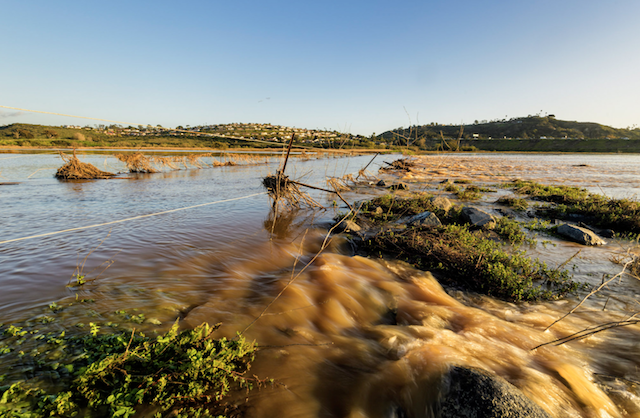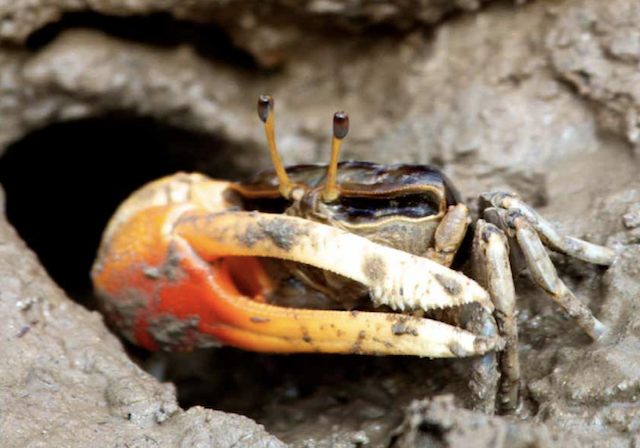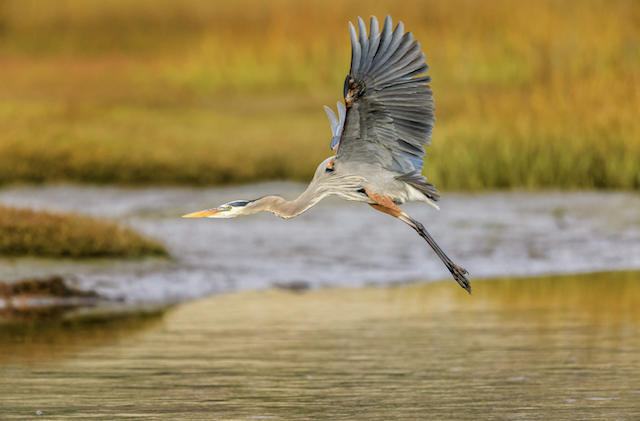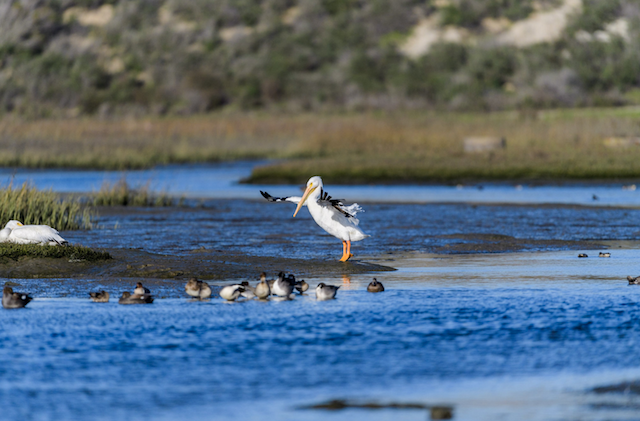Underwater Meadows of Life
Follow ( 0 Followers ) X Follow E-mail : * Follow Unfollow

There is a lot going on in the lagoon. We hope that the bigger picture of a healthier wetland will remind us all to imagine the flow of healthy waters and an increase in wildlife diversity in this important stopover for birds along the Pacific Flyway. And an important place for all of nature and community.
When planning began 20 years ago to enhance tidal circulation and the coastal habitats of San Elijo Lagoon, sea level rise was not a major theme. As scientific data regarding our warming climate became more readily available, planning for rising seas and more extreme weather events in our changing climate became a big focus in the Reviving Your Wetlands project.
San Elijo Lagoon Conservancy has updated the Frequently Asked Questions about Reviving Your Wetlands. When the project broke ground in late 2017 sea level rise was addressed by Conservancy, State and local leaders with news media.
“We’re enhancing now and for a future condition … like sea-level rise,” said Conservancy Executive Director Doug Gibson with San Diego Union-Tribune. “It’s not a number that’s going to sit still; we are aiming for ranges.”

Significant winter rains caused flooding in the Central Basin last year. Part of the area will be restored to better filter flooding events when the restoration project nears completion. New trail connections are coming as part of lagoon restoration.
So what will happen when global warming causes sea level to rise? Will the mudflats newly created during restoration be flooded?
We have built resiliency into this restoration and enhancement plan based on stakeholder experts’ best estimate of the likely range of seawater rise over the next 50 years. We have provided stepping stones for species. Areas of Central Basin will be higher than they are now. As seawater rises, subtidal and intertidal species will move upward into these areas. Also, the tidal saltmarsh will migrate into East Basin as the freshwater marsh moves upstream.

Look closely in the mudflats to see the male Fiddler crab (pictured) waving his largest pincer to attract females. Animals big and small will benefit from the expansion of mudflats after lagoon restoration—including migratory birds landing for food in our coastal wetlands along the Pacific Flyway. Image courtesy San Elijo Lagoon Conservancy Living Lagoon Teacher’s Guide
“There’s a very fine band that plants and animals that live in a tidal estuary are evolved to inhabit,” explained Megan Cooper, the Deputy Regional Director for California Coastal Conservancy. She related with 10 News that the restoration project will create what’s known as “upland habitat,” so that as sea levels rise, the existing plants have a space to migrate instead of being covered by water.

Great Blue Heron
Part of restoration is to create contoured basins and islands, so when sea level rise hits the coast in coming decades, the salt marsh and mudflats will be sustained. Gibson elaborated on this part with KPBS: “The problem is we have a lot of lagoons that are bowl-shaped. So as sea level rises, that habitat becomes that small ring around the bathtub. We know that species are going to be impacted and we’re trying to give them the best chance that we can in the future.”
So how do we know the plan will work?
The effects of the final plan have been estimated using scientifically accepted models which have proven successful in several similar restorations in Southern California, including Bolsa Chica, Batiquitos, and San Dieguito wetlands.
The Conservancy and our restoration partners are unique in having more than 25 years of data on which to base our models. We expect that some adjustments will be necessary. We are prepared to monitor the results closely and make any adjustments needed to fulfill restoration goals, also known as adaptive management.

“Big Bird and Small Birds”
“In the long run, it is going to mean a healthier habitat,” said Doug Gibson with 10 News. “This is really a look forward. We’re enhancing this system for future conditions that haven’t really happened yet.”
Thank you for following along as we bring forward more information about the restoration project. And, leave us a comment below. We look forward to sharing future posts based on your questions. Thank you for loving your lagoon.
Birds and Flood Photography of San Elijo Lagoon, by Lorenzo Menendez
Follow ( 0 Followers ) X Follow E-mail : * Follow Unfollow